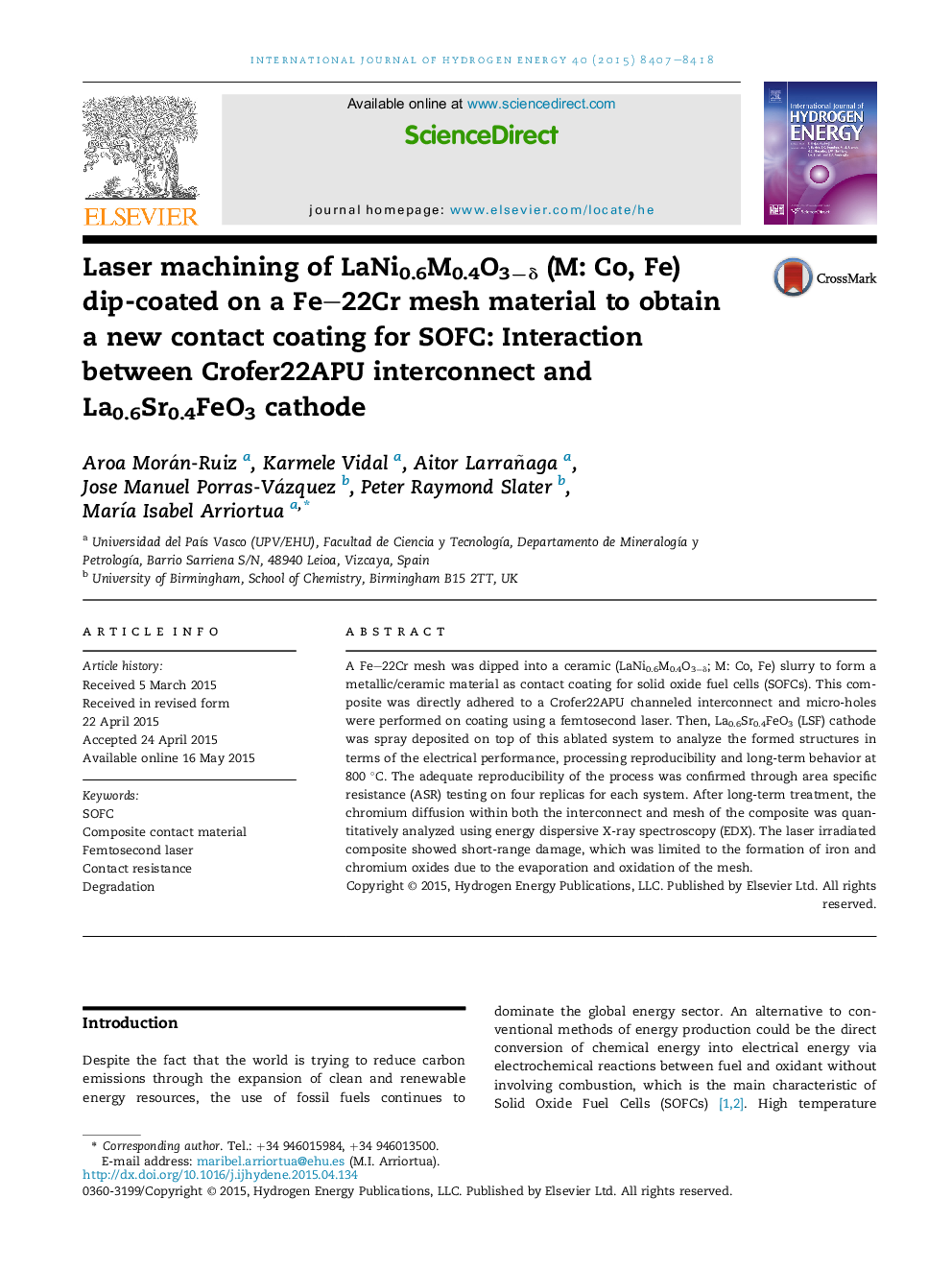| Article ID | Journal | Published Year | Pages | File Type |
|---|---|---|---|---|
| 1270721 | International Journal of Hydrogen Energy | 2015 | 12 Pages |
•Laser machined holes are produced on a metallic mesh coated with ceramic paste.•The laser irradiated composite showed short-range damage.•Reproducible ASR values were obtained for interconnect/contact layer/cathode setup.•A Cr reduction in interconnect or mesh means a Cr enrichment in the contact paste.
A Fe–22Cr mesh was dipped into a ceramic (LaNi0.6M0.4O3−δ; M: Co, Fe) slurry to form a metallic/ceramic material as contact coating for solid oxide fuel cells (SOFCs). This composite was directly adhered to a Crofer22APU channeled interconnect and micro-holes were performed on coating using a femtosecond laser. Then, La0.6Sr0.4FeO3 (LSF) cathode was spray deposited on top of this ablated system to analyze the formed structures in terms of the electrical performance, processing reproducibility and long-term behavior at 800 °C. The adequate reproducibility of the process was confirmed through area specific resistance (ASR) testing on four replicas for each system. After long-term treatment, the chromium diffusion within both the interconnect and mesh of the composite was quantitatively analyzed using energy dispersive X-ray spectroscopy (EDX). The laser irradiated composite showed short-range damage, which was limited to the formation of iron and chromium oxides due to the evaporation and oxidation of the mesh.
